| Conversational AI Platform Cultivate more profitable conversations
Leverage insights from conversational intelligence to perfect your conversations, strengthen sales performance and enhance the customer experience.

Automatic topic detection
Identify the topics covered at a glance.
Statistics & recommendations
Improve the quality of conversation content.
Call library
Use the best conversations as examples.

Discover how much time & money Empower could save you!
Your team spends weekly on post-call tasks
Use Empower to reduce post-call task time and save money

Save
Empower cuts after-call task time by 66%

Save $$
Based on an average pay rate of $35/hour
Monitor the effectiveness of discussions
Regardless of your team’s size, you can easily supervise their customer exchanges to identify trends and verify the content and structure quality!
- Transcripts and summary of phone & video calls
- Automatic identification of topics discussed
- Advanced filters (call quality, topics discussed…)
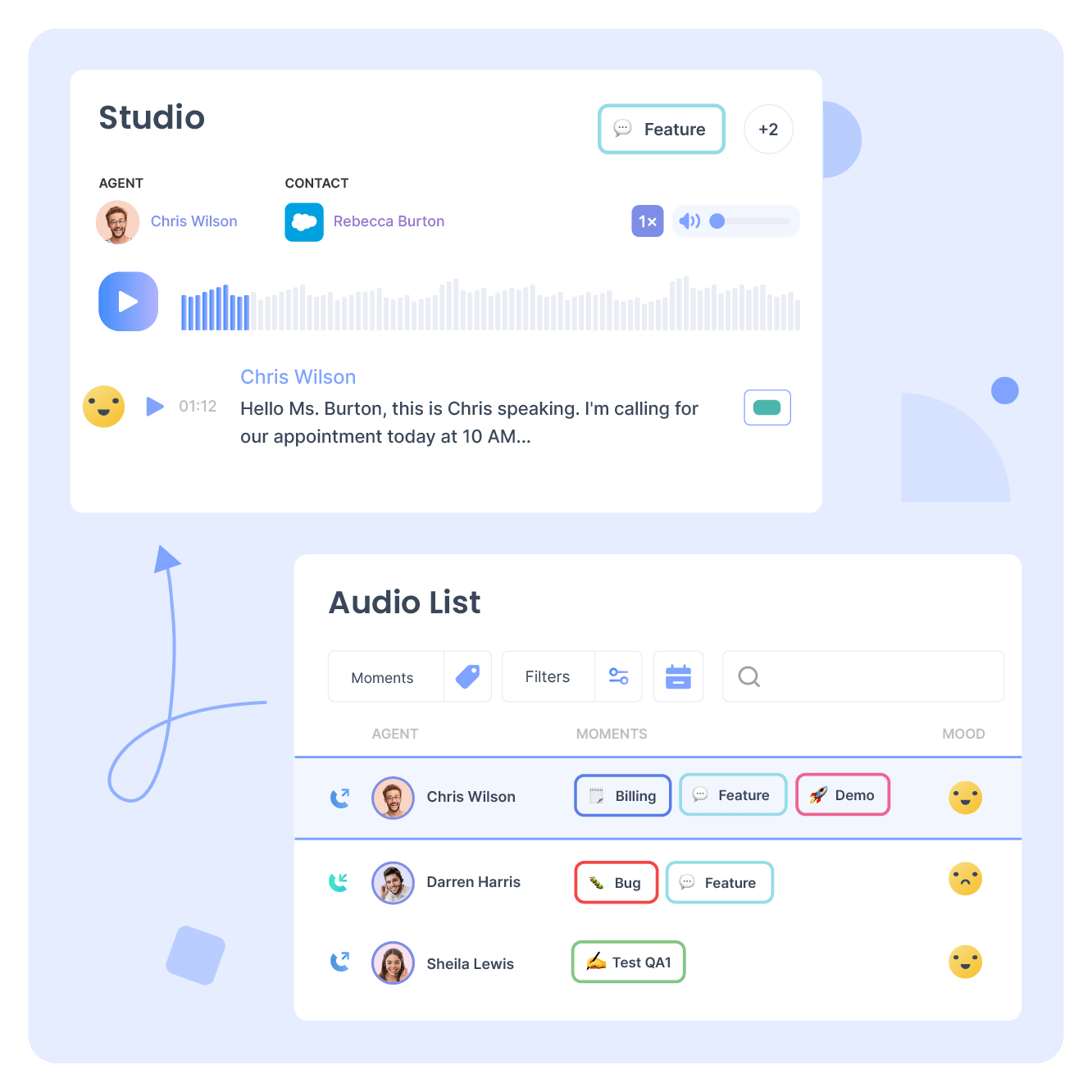
Accelerate skills development
Rapidly identify which employees need coaching, and train them more efficiently thanks to contextualized feedback. Perfect for ramping up new hires!
- Call library with best calls and snippets
- Tag your team in call notes
- Enhanced analytics (sentiment analysis, turn to speak, leaderboard)
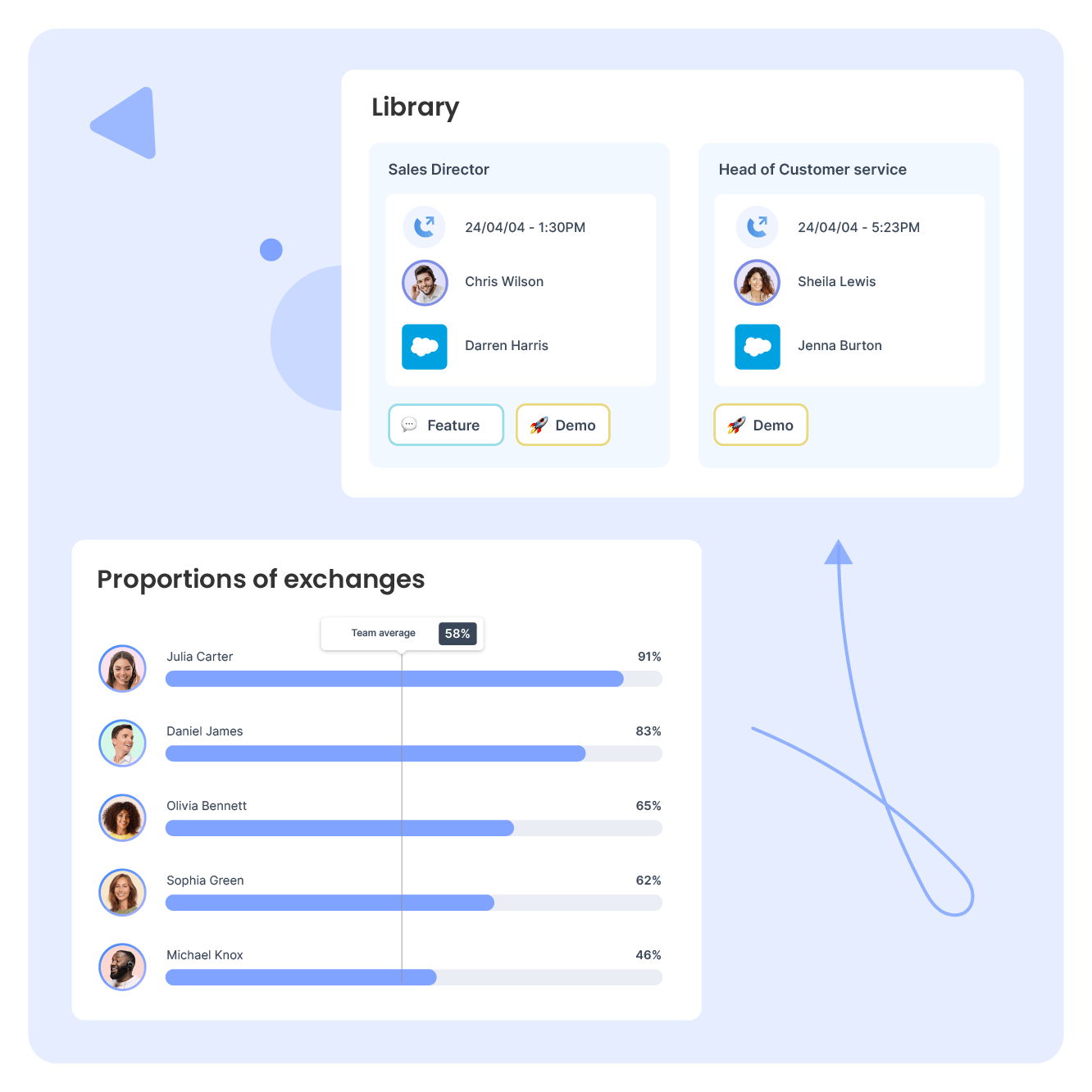
Save time after each phone call
Find out what was said during each call quickly and easily so your teams can spend their time on more important tasks like preparing for upcoming client meetings. You can streamline internal collaboration through call notes and tags–and automated call translation.
- Call summaries shared by email
- Ringover integration
- Integration with CRM & business tools
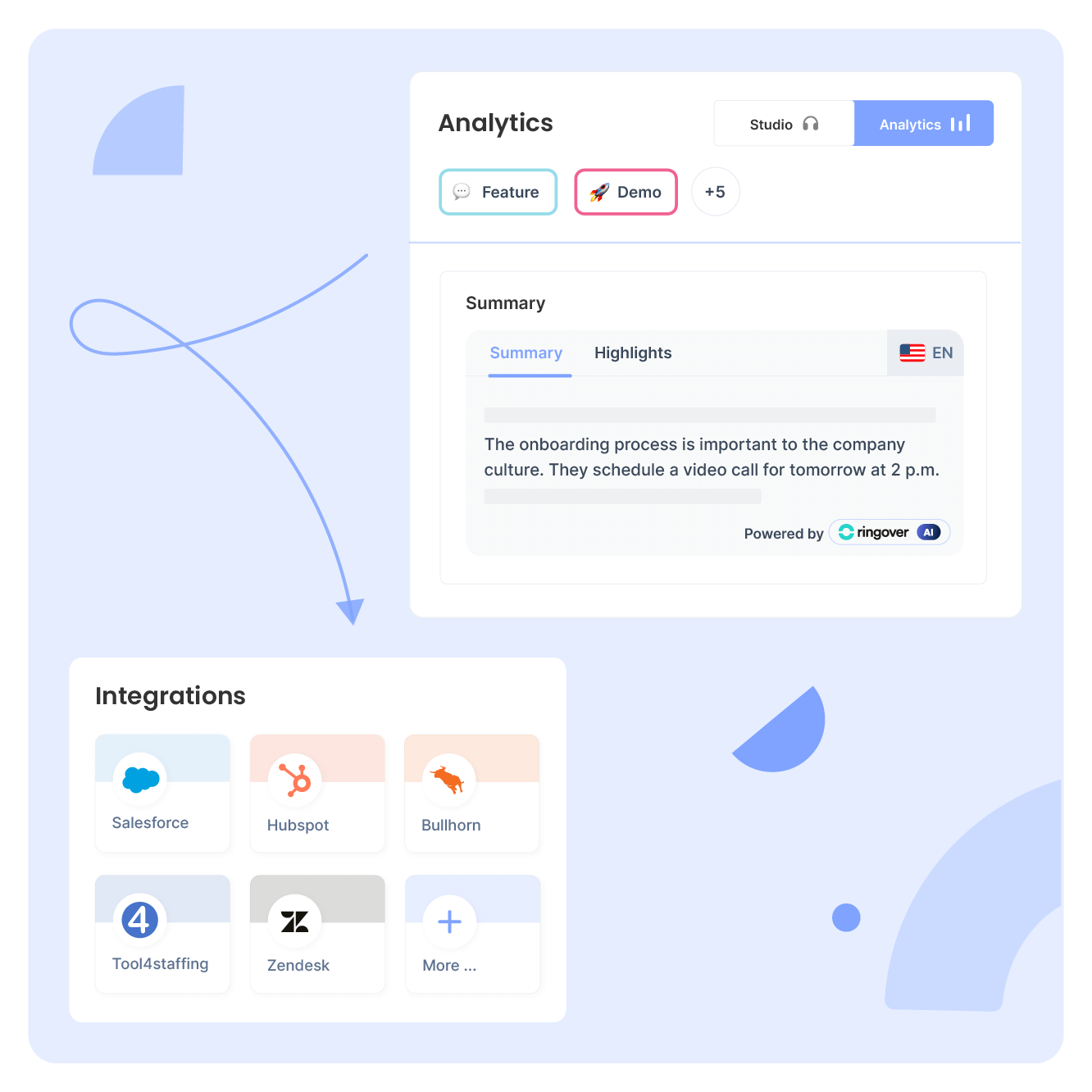
“Thanks to Empower, we’ve reduced by over 30 minutes the time spent on manual tasks per day per salesperson.”
Ricardo GonzálezHead of Sales B2C, ThePower Business School
See why others trust usBetter understand your customers and prospects
Identify your customers’ and prospects’ concerns effortlessly, as well as their most frequently discussed topics… in any language. By analyzing your customer exchange quality, you’ll develop an optimized strategy to improve your client conversations!
- Catalog of calls and transcriptions
- Identification of topics and keywords
- Call translation (including French, English, Spanish, Italian, Portuguese, German, and Dutch)
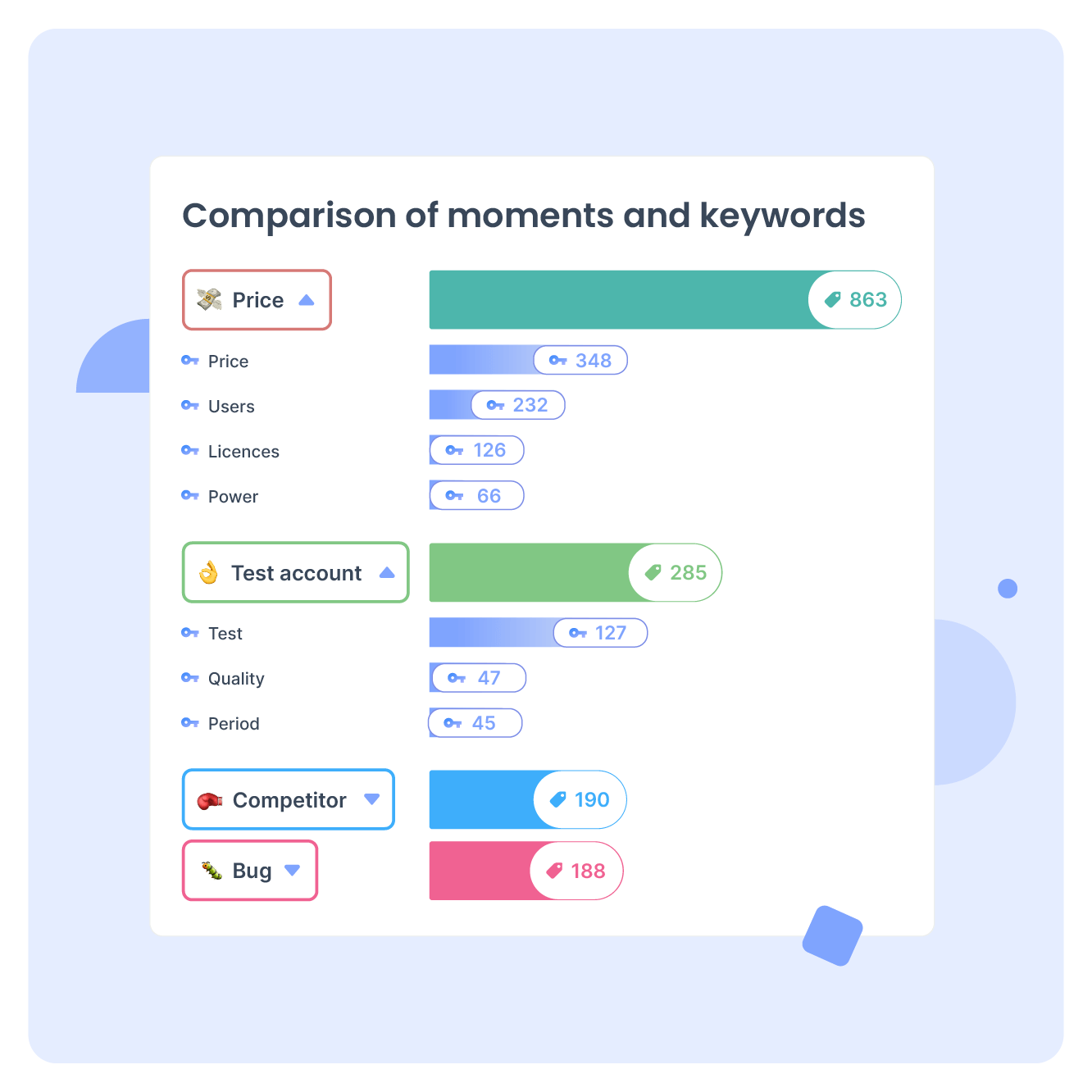
Integrate Empower with your business tools in a few clicks!
Easily access call analysis, including call summaries and next steps, with just one click directly from your CRM and other business tools.
Discover our marketplace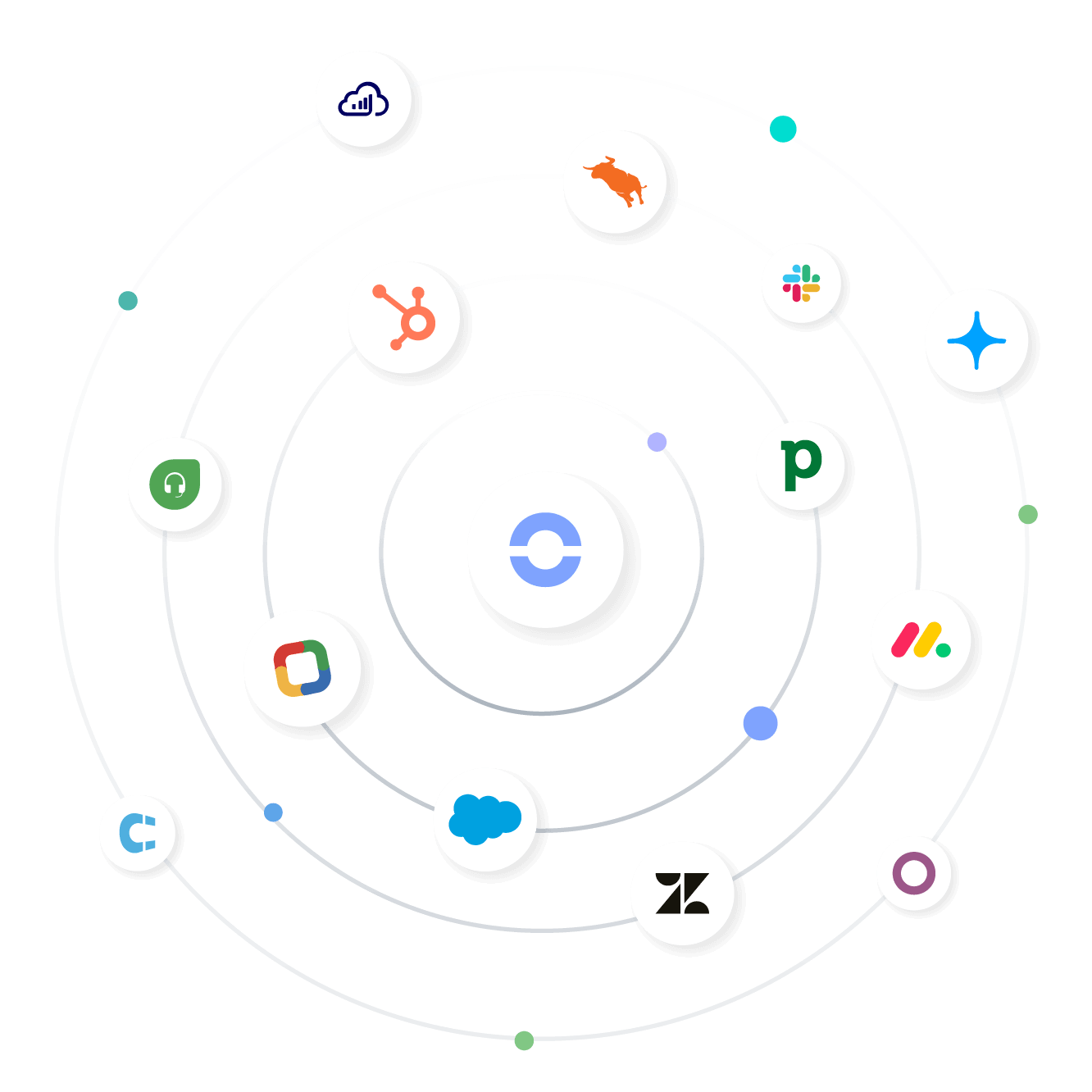
Conversational AI FAQ
- What is Empower by Ringover?
- What are the main features of the conversational AI platform Empower?
- How does Empower improve team training?
- Is Empower compatible with other professional tools?
- How does sentiment analysis work?
- What are the benefits of Empower’s conversational intelligence software for businesses?
- Is Empower easy to set up?
- Can I try Empower before buying it?
- In which languages is Empower available?
- How can I get technical support for Empower?
- What is conversational AI?
What is Empower by Ringover?
Empower by Ringover is conversational AI software designed to help businesses optimize interactions with their customers and prospects. Thanks to advanced features such as call transcription, sentiment analysis, personalized recommendations, and automatic summary generation, this conversation intelligence software helps teams improve the quality of customer service and strengthen their business strategies.
What are the main features of the conversational AI platform Empower?
- Call transcription and call summaries
- Customer sentiment analysis with recommendations on tone and conversation pacing
- Automatic identification of key topics discussed during calls
- Advanced AI statistics on the quality and content of interactions
- Transcription translation in multiple languages (English, Spanish, German, Italian, Portuguese, Dutch, French)
- Integrations with business tools: CRM, telephony, helpdesk, etc.
- Call catalog and call tags for efficient transcription classification
How does Empower improve team training?
Empower analyzes agent performance by tracking key indicators such as the frequency of interruptions or speaking time management. It provides personalized feedback to improve communication skills, the effectiveness of sales pitches, and the quality of customer service.
Is Empower compatible with other professional tools?
Yes, Empower easily integrates with platforms like CRMs, business phone systems like Ringover, and helpdesk tools, allowing centralized and efficient management of customer interactions. You can find all Empower integrations here.
How does sentiment analysis work?
The Empower conversation intelligence software detects the emotional tone of conversations to assess customer satisfaction based on the transcriptions. This helps adapt future communications and improve the customer experience.
What are the benefits of Empower’s conversational intelligence software for businesses?
- Enhanced personalization of customer service
- Increased productivity through automation and advanced analysis
- Better decision-making based on conversation analysis
- Optimization of sales cycle and customer retention processes
Is Empower easy to set up?
Yes, Empower is a 100% cloud-based solution, deployable in just a few clicks without requiring advanced technical skills. Over time, you can easily specify the relevant terms to track based on your strategy and business needs.
Can I try Empower before buying it?
Yes, Ringover offers a free trial for its conversational intelligence software, allowing businesses to explore Empower’s features before full deployment and integration.
In which languages is Empower available?
Empower supports transcription and translation in multiple languages, including English, Spanish, Dutch, Italian, German, Portuguese, and French, making it easy to use for international activities.
How can I get technical support for Empower?
You can access Ringover’s dedicated Empower help center or contact our technical team directly via our website or by phone for any questions or assistance.
What is conversational AI?
Conversational AI refers to the use of artificial intelligence to interact with users through natural language, both written and spoken. It relies on technologies like natural language processing (NLP) and machine learning, enabling systems to understand, analyze, and respond to requests smoothly.
Among a conversational AI platform’s main applications are chatbots, virtual assistants, and automated conversational analysis solutions like Empower. Here are some advantages of conversational AI platforms:
- Better understanding of customers
- Identification of best sales and customer support practices
- Optimization of new hire onboarding to facilitate adaptation
- Identification and analysis of trends through customer interactions